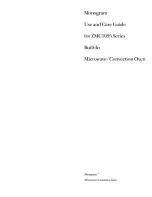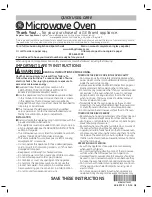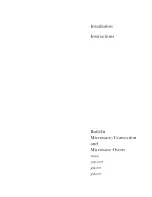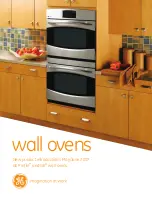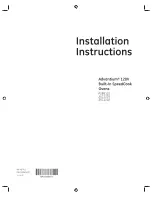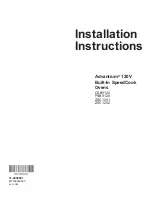
Tested for you in our cooking studio
en
31
Tips on baking
Bread and rolls
Your appliance offers you a range of heating types for
baking bread and rolls. You can find the ideal settings
for many dishes in the settings tables.
Also refer to the notes in the section on allowing dough
to rise.
Only use original accessories supplied with your
appliance. These have been tailored to the cooking
compartment and the operating modes of your
appliance.
Shelf positions
Use the indicated shelf positions.
Baking on one level
When baking on one level, use the following shelf
positions:
■
Tall baked items: Level 2
■
Flat baked items: Level 3
If you are using CircoTherm Hot air as the type of
heating, you can choose between levels 1, 2, 3 and 4.
Baking on two levels
Use CircoTherm. Baked items that are placed into the
oven on trays or in baking tins/dishes at the same time
will not necessarily be ready at the same time.
■
Universal pan: Level 3
Baking tray: Level 1
■
Baking tins/dishes on the wire rack
First wire rack: Level 3
Second wire rack: Level 1
By preparing several dishes at the same time, you can
make energy savings of up to 45 per cent. Position
baking tins/dishes next to one another or offset and
vertically stacked in the cooking compartment.
Accessories
Ensure that you always use suitable accessories and
that they are placed in the oven the right way around.
Wire rack
Insert the wire rack with the open side facing the
appliance door and the curved lip pointing downwards.
Always place ovenware, tins and dishes on the wire
rack.
Universal pan or baking tray
Slide the universal pan or the baking tray in carefully as
far as the limit stop with the bevelled edge facing the
appliance door.
You want to find out whether the cake
is completely cooked in the middle.
Push a cocktail stick into the highest point on the cake. If the cocktail stick comes out clean with no dough res-
idue, the cake is ready.
The cake collapses.
Next time, use less liquid. Alternatively, set the temperature to be 10 °C lower and extend the baking time.
Adhere to the specified ingredients and preparation instructions in the recipe.
The cake has risen in the middle but
is lower around the edge.
Only grease the base of the springform cake tin. After baking, loosen the cake carefully with a knife.
The fruit juice overflows.
Next time, use the universal pan.
Small baked items stick to one
another during baking.
There should be a gap of approx. 2 cm around each item. This gives enough space for the baked items to
expand well and brown on all sides.
The cake is too dry.
Set the temperature 10 °C higher and shorten the baking time.
The cake is generally too light in col-
our.
If the shelf position and the cookware are correct, then you should increase the temperature if necessary or
extend the baking time.
The cake is too light on top, and too
dark underneath.
Bake the cake one level higher in the oven the next time.
The cake is too dark on top, and too
light underneath.
Bake the cake one level lower in the oven the next time. Select a lower temperature and extend the baking
time.
Cakes baked in a tray or tin are too
brown at the back.
Place the baking tray in the middle of the accessories, not directly against the back wall.
The whole cake is too dark.
Select a lower temperature next time and extend the baking time if necessary.
The cake is unevenly browned.
Select a slightly lower temperature.
Protruding greaseproof paper can affect the air circulation. Always cut greaseproof paper to size.
Ensure that the baking tin does not stand directly in front of the openings in the cooking compartment back
wall.
When baking small items, you should use similar sizes and thicknesses wherever possible.
You were baking on several levels.
The items on the top baking tray are
darker than those on the lower baking
tray.
Always use CircoTherm when baking on several levels. Baked items that are placed into the oven on trays or
in baking tins/dishes at the same time will not necessarily be ready at the same time.
The cake looks good, but is not
cooked properly in the middle.
Use a lower temperature and bake slightly longer; if necessary, add slightly less liquid. For cakes with a moist
topping, bake the base first. Sprinkle it with almonds or breadcrumbs and then place the topping on top.
The cake cannot be turned out of the
dish when it is turned upside down.
Allow the cake to cool down for 5 to 10 minutes after baking. If it still sticks, carefully loosen the cake around
the edges again using a knife. Turn the cake tin upside down again and cover it several times with a cold, wet
cloth. Next time, grease the baking tin/dish and sprinkle with breadcrumbs.
Summary of Contents for B27CS22 1 Series
Page 1: ...en INSTRUCTION MANUAL BUILT IN OVEN B27CS22 1...
Page 2: ......
Page 49: ...6...
Page 50: ...6...
Page 51: ......































